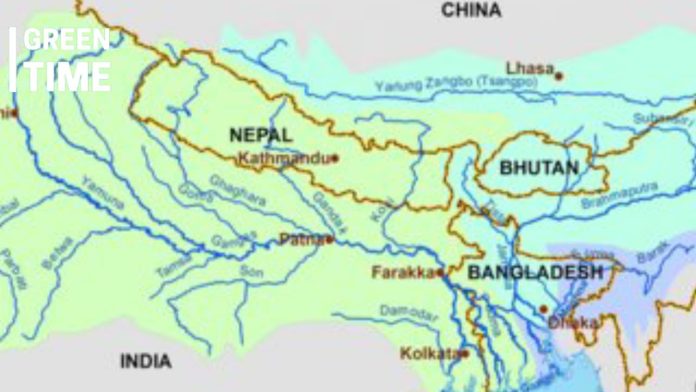Israt Jahan
The ecological health of river catchments is intrinsically linked to the freshwater flow within those rivers. However, human activities such as the construction of dams and weirs, water extraction for agriculture and urban supply, drainage return flows, maintenance of navigation routes, and flood control measures have significantly altered these natural flows (Dyson et al., 2003). Effective river management is crucial for all who rely on these water bodies. Additionally, there is a growing commitment to preserving the ecological integrity of rivers and wetlands to support both human needs and biodiversity. In alignment with Sustainable Development Goal 6 (SDG 6) of the United Nations, which aims to ensure the availability and sustainable management of water and sanitation for all, it is imperative to incorporate sustainable development principles into national policies and programs to prevent further environmental degradation.
The Helsinki Rules of 1966 on water rights for international rivers stipulate that all basin states of an international river are entitled to an equitable and reasonable share of its water flow. Bangladesh, formed by the deltaic deposits of the Ganges-Brahmaputra-Meghna (GBM) river system, is heavily influenced by these three large and dynamic rivers. However, about 90% of the watershed for these rivers lies outside Bangladesh, within India, Nepal, Bhutan, and China (Er-rashid, 1978). Since 1974, India has been diverting approximately 60% of the water from the Ganges River ecosystem in Bangladesh to maintain the navigability of the Calcutta Port, located around 510 km downstream from the Farakka Barrage at the mouth of the Hooghly River (Adel, 2013). This unilateral and disproportionate diversion has led to a significant reduction in the sediment and water flow of the Ganges in Bangladesh. As a result, the delta now receives insufficient environmental water flow during the dry season, causing the southwestern region of Bangladesh to face several challenges. These include a decrease in the rivers’ carrying capacity due to excessive siltation, increased water scarcity for irrigation, insufficient water depth for navigation, salinity intrusion, and a shortage of water needed for ecosystem services.
The Mathabhanga River, a key distributary of the Ganges, plays a crucial role in the region’s hydrology. The Kapotakkho River, which originates from the Mathabhanga at Alamdanga in Chuadanga and flows into the Sibsa at Paikgaca in Khulna, is heavily influenced by sedimentation and human activities. Over time, the Kobadak has lost much of its drainage capacity due to reduced upstream flow and significant sediment buildup. As a result, overbank spillage during peak monsoon seasons has become a regular occurrence, leading to widespread waterlogging throughout the catchment area.
Historically, the river supported various socio-economic activities, including fisheries, navigation, agriculture, and domestic uses. However, the degradation of aquatic habitats has severely impacted the fisheries sector, leaving many fishermen in vulnerable conditions. Consequently, many fish species are now on the brink of extinction.
The Gorai River, located in the southwestern region of Bangladesh, is a vital watercourse that draws its flow from the Ganges River. It carries freshwater in its upstream segments and transitions to saline water as it approaches the estuary. Serving as the primary source of upland freshwater for the region, the Gorai River plays a crucial role in sustaining both the environment and the economy. The Environmental Flow Requirement (EFR) for rivers like the Gorai varies by region, reflecting the diverse ecological and socio-economic needs.
The Gorai discharges into the Bay of Bengal through the Madhumati and Baleswar Rivers, acting as a critical channel for maintaining the ecological balance and supporting economic activities in the area (Islam and Gnauck, 2011). However, the excessive extraction of water from the Ganges River upstream in India has led to a gradual drying up of its distributaries within Bangladesh, particularly during the dry season. The construction of the Farakka Barrage in 1974 exacerbated this issue, significantly reducing dry season flows in the Ganges distributaries that feed the southwestern region, including the Gorai River. This has resulted in two major environmental impacts within the Gorai catchment area.
Firstly, there has been a continuous process of siltation, progressing from the northwest to the southeast, contributing to the transition of the southwestern coastal zone from an active, developing delta to a semi-moribund state. Secondly, the reduction in freshwater flow has led to increased saline intrusion, exacerbated by tidal penetration (Ali and Hossen, 2022). The situation is particularly concerning for the second-largest port in Bangladesh, Mongla, which is located downstream of the Gorai River. This port relies on a sustainable upstream flow to maintain adequate navigation depth, which is now under threat due to diminished transboundary flow in the Ganges and ongoing siltation at the Gorai offtake (Zhang et al., 2021).
The outlook is troubling, as studies predict that low dry-season river flow episodes at Farakka will become more frequent due to an increased likelihood of droughts and reduced snowmelt, both of which are essential for supporting dry-season flows (Goes et al., 2020). Bangladesh shares 54 rivers with India, yet there is only one treaty governing water sharing between the two countries. This underscores the urgent need to focus on issues such as navigation, water quality, climate change, flood management, and resilience.
To address these challenges, Environmental Flow (EF) parameters, such as those for the Kapotakkho and Gorai Rivers, should be considered critical in ensuring minimum downstream flow. Establishing and maintaining these minimum flow levels is essential not only for preserving the ecological integrity of these rivers but also for supporting the livelihoods and economies that depend on them.
Author: Israt Jahan, Urban Planner and Environmental Activist

